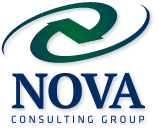It is the lifeblood of any business. Without revenue, the enterprise will cease. Each week, sales teams (including yours) are having “pipeline status” discussions. These discussions may have different names but they all have one goal in mind – what will close when.
Understanding and monitoring the health of the “pipeline” is one of the central operations for your sales team.
For sales leaders it is about understanding, qualifying and alignment:
- Understanding – the various opportunities that are currently in the pipeline. Some of the questions to ask are…Why are they there? Do they meet the criteria required for pipeline inclusion? What are the hurdles blocking a successful close? How long have they been in the pipeline and are they stalled? When were they last updated? What resources have been committed? What resources are required to close? What was the source of the opportunity?
- Qualifying – In this area, some of the questions…Are the opportunities “real” or have they been entered just to show activity? Will they require a disproportionate share of resources to close? Can they be “won”? What is the confidence and commitment level from the individual contributor?
- Alignment – It is good to ask these questions…Do the opportunities meet the pipeline criteria? Are they entered according to the defined sales process? Have steps in the sales process been skipped? Is the prospective client aligned with the “ideal customer” criteria; will supporting functions such as post-sales support/implementation be able to deliver the services expected by the prospective client; what are the elements of the opportunity; do they align with your company’s capabilities….
For the individual sales team contributor, it is about qualifying, process and movement:
- Qualifying – Some things to think about…does the opportunity meet the established criteria for inclusion in the pipeline? What is the confidence and commitment level? How do you know that all of the influencers are known and qualified? What are the business wins? What are the personal wins of the influencers? Is the project funded or exploratory? What is the source of the opportunity? Does it come from an RFP and who composed the RFP requirements? Do the “must have” requirements align with your current product and/or services?
- Process – Not having a good understanding of your own and your customer’s process can create obstacles. What is the prospective client’s buying process vs. your sales process? How well do they align and, if not can adjustments be made? Have all of the elements included in each step of the process been identified and accomplished before moving the opportunity forward? What are the internal and external pressures which will alter the established process? What is the impact of internal and external pressures? How will the “human effect” have an impact on the opportunity? And this key question…who controls what step in the process?
- Movement – Equally important is how movement is created and supported. How long have opportunities been in the pipeline? How does the established process align with the timing of the opportunity (is it stuck or stalled)? What resources are needed to successfully close (anticipate and line up early)? How will final contracts (if applicable) be negotiated and finalized? Who is the competition and how will they disrupt the movement? Are all of the stakeholders and influencers on both sides of the opportunity been identified and are they “on-board?
The examples cited are not intended to be complete but only to highlight that insuring a healthy pipeline is a complicated and detailed task. Not only are there many moving, dynamic parts but the health of any sales pipeline is heavily impacted by the “human effect”. The pipeline is the result of your work on strategy, process and execution. It is where you can see some of the symptoms of misalignment. It is not to be taken lightly nor left in the hands of the inexperienced.
To get that revenue, nurture your team members
Too often we find companies conducting their weekly sales pipeline reviews in a group session. This methodology is outdated and, for the inexperienced, a waste of resources and contributes nothing to a healthy pipeline. We live in changed world. Mass-anything no longer works. To truly optimize the health of your sales pipeline, sales leaders and individual contributors must engage in a “continuous process of nurturing” (Huxham & Vangen, 2000c). Sales leaders interact with each team member and individual contributors with their clients and prospective clients. Pipeline discussions are continuous and individual. They are not solely discussions about structure and form of the process but also include consideration of the human element involved in each opportunity.
The opportunities in your sales pipeline are collaborative trust alliances. With 66% of collaborative trust alliances failing (Bleeke and Ernst) due to the human effect, it is critical to the health of your pipeline that you focus not only on the structure but on the humans who control your pipeline’s health.
Go beyond simply the team…get into the human element
This is not done in a group setting. It is done in individual discussions, sales leaders with their individual contributors; individual contributors with their prospective clients/clients. In this setting alone can all involved align the structure and process with the human effect and insure the health of the sales pipeline.
Revenue depends on how well the sales leader manages the humans on the team and the team as a whole. Asking questions like the ones above lets you know what is happening in the pipeline. So – do you know where your revenue is?


